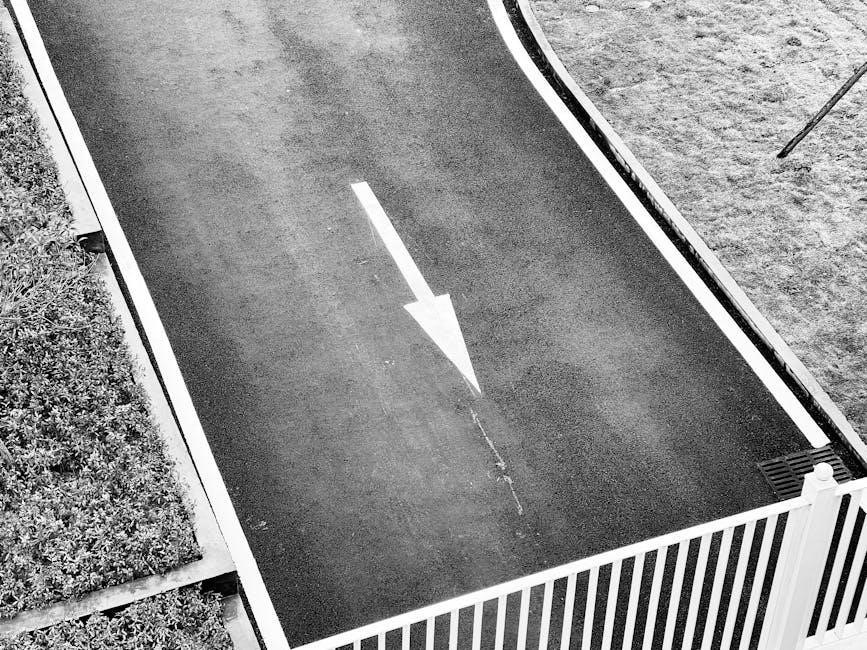
Cam-A-Line Dowel Guide: A Comprehensive Overview
The Cam-A-Line dowel guide is a unique tool designed for creating accurate and strong dowel joints in woodworking projects. Its cam system and precision-engraved centerlines offer variable spacing and robust fence, making it a complete doweling jig for various applications.
Dowel joints are a fundamental technique in woodworking, offering a clean and strong method for connecting wood pieces. They involve using small cylindrical pins, known as dowels, to reinforce the joint. Dowel joints are valued for their simplicity and ability to create aesthetically pleasing, hidden connections, unlike screws or nails that are visible.
Dowel guides, or doweling jigs, play a crucial role in creating precise dowel joints. These tools ensure that the holes drilled for the dowels are accurately aligned, resulting in a flush and robust joint. Without a dowel guide, achieving perfect alignment can be challenging, leading to weak or misaligned joints.
Various types of dowel guides exist, each with its own features and benefits. Some are self-centering, automatically aligning with the workpiece, while others require manual alignment. The choice of dowel guide depends on the specific project requirements and the user’s skill level. Tools like the Cam-A-Line dowel guide offer advanced features for greater precision and versatility.
Understanding the Cam-A-Line Dowel Guide
The Woodpeckers Cam-A-Line Dowel Guide stands out as a versatile and precise tool in the realm of doweling jigs. It’s designed to simplify the process of creating accurate dowel joints, making it suitable for both amateur and professional woodworkers. Its unique cam system allows for variable spacing between dowel holes, a feature not commonly found in standard doweling jigs.
At its core, the Cam-A-Line system utilizes an ingenious cam mechanism that precisely positions the drill guide bushings. This ensures consistent spacing and alignment, leading to stronger and more reliable joints. The guide also features precision-engraved centerlines, aiding in accurate alignment with the workpiece.
Furthermore, the Cam-A-Line Dowel Guide incorporates a robust fence and a versatile stop system, enhancing its usability across a wide range of woodworking projects. These features enable the user to create edge-to-edge, edge-to-end, and miter joints with ease and precision. Understanding these components is key to harnessing the full potential of the Cam-A-Line system.
Key Features of the Cam-A-Line System
The Cam-A-Line Dowel Guide boasts several key features that set it apart from other doweling jigs on the market. One of its most notable attributes is its unique cam system, which allows for variable spacing between dowel holes. This feature provides greater flexibility in joint design and strength, catering to diverse woodworking needs.
Precision-engraved centerlines are another crucial element of the Cam-A-Line system. These lines ensure accurate alignment with the workpiece, minimizing errors and maximizing the precision of the dowel joints. The robust fence provides stability and support during the drilling process, further enhancing accuracy.
The versatile stop system is designed to control the depth of the drilled holes, ensuring consistency and preventing over-drilling. The guide bushings, made from hardened steel, guarantee durability and precise hole placement. These features, combined, make the Cam-A-Line system a comprehensive and reliable tool for creating high-quality dowel joints in various woodworking applications.
Benefits of Using a Cam-A-Line Dowel Guide
Employing a Cam-A-Line dowel guide in woodworking projects offers a multitude of benefits, primarily centered around accuracy, efficiency, and joint strength. The precision offered by the Cam-A-Line system ensures that dowel holes are drilled exactly where intended, resulting in tight-fitting and robust joints. This accuracy minimizes the risk of misaligned or weak connections, enhancing the overall quality and longevity of the finished piece.
The variable spacing feature allows for customized joint designs, catering to specific load-bearing requirements and aesthetic preferences. Its robust construction and hardened steel guide bushings ensure durability and consistent performance over time. The versatile stop system further contributes to efficiency by enabling precise depth control, preventing over-drilling and ensuring uniform dowel placement.
The Cam-A-Line dowel guide simplifies the doweling process, making it accessible to both novice and experienced woodworkers. By streamlining the creation of accurate dowel joints, this tool helps reduce project completion time and increases the likelihood of successful outcomes.
Alternative Dowel Jig Types and Their Features
Beyond the Cam-A-Line dowel guide, various other dowel jig types cater to different woodworking needs and preferences. Self-centering dowel jigs, for instance, excel in edge-to-edge and edge-to-surface doweling, automatically aligning themselves to the workpiece’s center. These jigs typically feature two parallel guide rails that ensure accurate hole placement.
Another common type is the multi-dowel jig, which allows for drilling multiple dowel holes simultaneously, enhancing efficiency in projects requiring numerous dowels. These jigs often come with interchangeable bushings to accommodate different dowel sizes.

Simple handheld dowel jigs, often made from plastic or metal, provide a more affordable and portable option. While they may not offer the same level of precision as more sophisticated jigs, they can still be effective for basic doweling tasks. Some jigs combine features, such as the 3-in-1 adjustable doweling jig, which can be used for drilling dowel holes, vertical holes, and eccentric fastener holes. The choice of dowel jig depends on the project’s complexity, budget, and desired level of accuracy.
Self-Centering Dowel Jigs: How They Work
Self-centering dowel jigs are designed to simplify the process of creating accurate and aligned dowel joints, particularly for edge-to-edge, edge-to-end, and surface joints. These jigs operate on a simple yet effective principle: they automatically center themselves on the workpiece, ensuring that the drilled holes are perfectly aligned.
The core mechanism of a self-centering dowel jig involves two parallel guide rails that clamp onto the workpiece. These rails are connected to a central drilling guide, which houses bushings for various dowel sizes. When the jig is clamped onto the wood, the guide rails automatically position the drilling guide in the exact center of the edge or surface.
This self-centering action eliminates the need for manual measurements and marking, reducing the risk of errors and ensuring consistent results. To use a self-centering jig, simply clamp it onto the workpiece, select the appropriate bushing for the dowel size, and drill through the guide. The resulting holes will be perfectly centered, allowing for a strong and seamless dowel joint.
DIY Dowel Jig Construction
Creating your own dowel jig is a cost-effective alternative to purchasing commercially made jigs, allowing for customization to suit specific project needs. A DIY dowel jig can be constructed from readily available materials, such as hardwood scraps, metal bushings, and basic hardware. The fundamental principle involves creating a stable platform with precisely drilled holes that serve as guides for drilling dowel holes in workpieces.
The construction process typically begins with selecting a suitable piece of hardwood for the jig’s body. This piece should be thick enough to provide stability and accommodate the desired dowel sizes. Next, carefully measure and drill a series of holes through the wood, ensuring that they are perfectly perpendicular to the surface. These holes will serve as the guides for the drill bit.

For enhanced accuracy and durability, metal bushings can be inserted into the drilled holes. These bushings provide a hardened surface for the drill bit to pass through, minimizing wear and tear on the jig. Finally, a clamping mechanism can be added to secure the jig to the workpiece, ensuring precise alignment during drilling. With careful planning and execution, a DIY dowel jig can be a valuable addition to any woodworker’s tool collection.

Using a Doweling Jig: Step-by-Step Instructions
Achieving precise and consistent dowel joints requires a systematic approach when using a doweling jig. The following step-by-step instructions provide a comprehensive guide for utilizing a doweling jig effectively. First, accurately lay out the desired dowel locations on both workpieces, marking the center points for each dowel.
Next, align the doweling jig with the marked center points on the first workpiece, ensuring that the jig is securely clamped in place. Select the appropriate drill bit size that matches the dowel diameter and insert it into the drill. Carefully drill the holes to the desired depth, using the jig’s guide bushings to maintain accuracy.
Repeat the process on the second workpiece, aligning the jig with the corresponding marked center points. Once all the holes have been drilled, test the fit of the dowels. Apply glue to the dowel holes and insert the dowels, ensuring they are fully seated. Finally, clamp the workpieces together until the glue has dried, creating a strong and accurate dowel joint. Following these instructions will help ensure successful and professional-looking results when using a doweling jig.
Applications of Dowel Joints in Woodworking
Dowel joints are a versatile and reliable method for joining wood in a wide range of woodworking projects. Their strength and ease of use make them ideal for various applications, from furniture construction to cabinet making. In furniture making, dowel joints are commonly used to assemble chair frames, table legs, and drawer boxes, providing a clean and sturdy connection.
Cabinet makers frequently employ dowel joints for assembling cabinet carcasses, face frames, and door panels, ensuring precise alignment and structural integrity. Dowel joints also excel in edge-to-edge joining, creating wide panels for tabletops, doors, and other large surfaces. Their ability to reinforce glue lines makes them suitable for demanding applications.
Furthermore, dowel joints can be used in decorative applications, such as creating intricate patterns or reinforcing miter joints in picture frames. The versatility of dowel joints makes them a valuable technique for both amateur and professional woodworkers, offering a strong and aesthetically pleasing solution for various woodworking needs, ensuring long-lasting and beautiful results in a multitude of projects.
Where to Buy Cam-A-Line Dowel Guides and Accessories
The Cam-A-Line dowel guide, known for its precision and versatility in creating dowel joints, can be purchased from various sources, ensuring accessibility for woodworkers of all levels. Woodpeckers, the manufacturer of the Cam-A-Line system, is a primary source, offering the complete dowel guide along with a range of accessories. Their website provides detailed product information and direct purchasing options.

Online retailers such as Amazon and eBay also carry the Cam-A-Line dowel guide and related accessories. These platforms often provide competitive pricing and customer reviews, aiding in informed purchasing decisions. Specialty woodworking stores, both online and brick-and-mortar, are another avenue for acquiring the Cam-A-Line system. These stores typically offer expert advice and a curated selection of high-quality tools;
When purchasing, consider the specific accessories needed for your projects, such as additional guide bushings or stop systems. Comparing prices and checking for promotions across different retailers can help maximize value. Ensure the retailer is reputable to guarantee genuine products and reliable customer support. By exploring these options, woodworkers can easily obtain the Cam-A-Line dowel guide and accessories to enhance their woodworking endeavors.